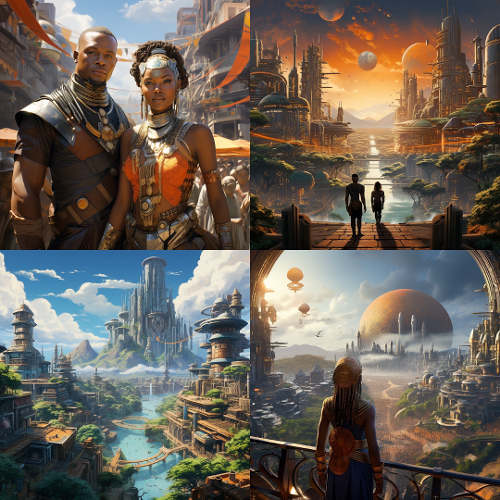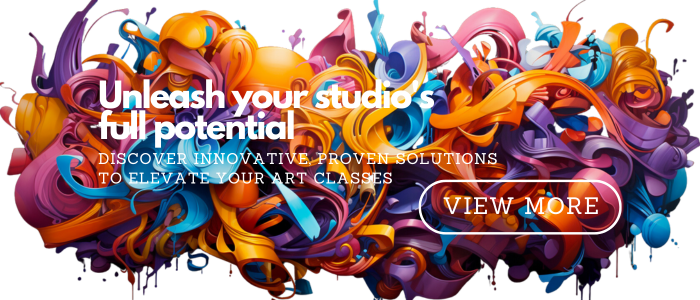Afrofuturism as an art form is a creative and cultural movement that combines elements of science fiction, history, fantasy, and African diaspora culture. It serves as a conceptual tool to explore and critique present and historical social conditions while envisioning a future shaped by technology and Black imagination.
In Afrofuturistic art, artists often use speculative design, surreal landscapes, and technologically advanced societies to explore and celebrate African cultures, reconstruct Black identities, and propose new social and political realities. The artworks often incorporate symbols and imagery drawn from African cultures, manifested in futuristic settings. These worlds are often populated by strong, empowered Black characters, who contrary to historic and often present-day narratives, are the heroes, leaders, and innovators.
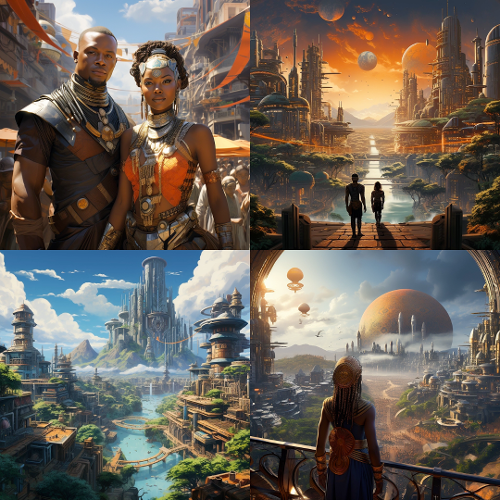
The use of vibrant colors and geometric patterns reminiscent of traditional African art is common in Afrofuturistic visual arts, as are representations of advanced technology and alien civilizations. Visual artists like Wangechi Mutu and Victor Ekpuk, musicians like Sun Ra and Janelle Monáe, and filmmakers like Ryan Coogler with Black Panther have all contributed to defining this style and ideology.
Ultimately, Afrofuturism in art seeks to reclaim Black history, redefine current Black culture, and imagine a future where Black individuals are central, powerful, and revered. It's a way to rewrite a narrative that was often written by those outside of the culture and to challenge representations and limitations of Black people in society and mainstream media. It is empowering, and hopeful, and offers a transformative narrative that counters systemic oppression and celebrates Blackness.
Is Wakanda in Black Panther part of Afrofuturism?
Yes, Wakanda in Black Panther is part of Afrofuturism. The film and the imaginary nation of Wakanda provide a fantastic example of the Afrofuturistic aesthetic, mixing advanced technology with traditional African cultures. The hidden African nation of Wakanda is portrayed as a futuristic, technologically advanced society, which aligns with Afrofuturism's speculative vision of the future.
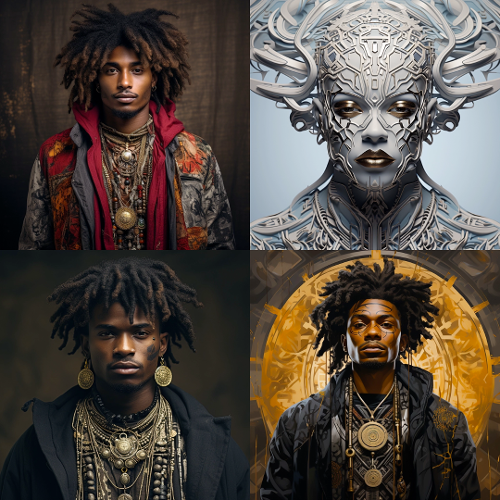
The design of Wakanda in the movie was deeply influenced by Afrofuturism. Production designer Hannah Beachler and costume designer Ruth E. Carter worked collaboratively, drawing inspiration from Afrofuturism to fully realize Wakanda onscreen. In doing so, they combined leading-edge technology with diverse African cultural elements.
In essence, Wakanda is a living embodiment of the central themes of Afrofuturism—it provides a view of the future influenced by Black culture, Black liberation, and technology. Its groundbreaking portrayal gives life to a futuristic world, free from past and present oppressions, where Black individuals are not just present, but are leading, thriving, and shaping their own destiny.
In conclusion, Wakanda in Black Panther is not just a part of Afrofuturism but is one of the most powerful and popular renditions of the Afrofuturistic vision in mainstream media.
Afrofuturism is often classified as a part of "fantasy art," as it prominently features elements of fantasy, history, and science fiction to create narratives and images centered on Black experiences. A key aspect of Afrofuturism is its speculative nature, combining elements of science fiction and fantasy to envision alternative realities and futures.
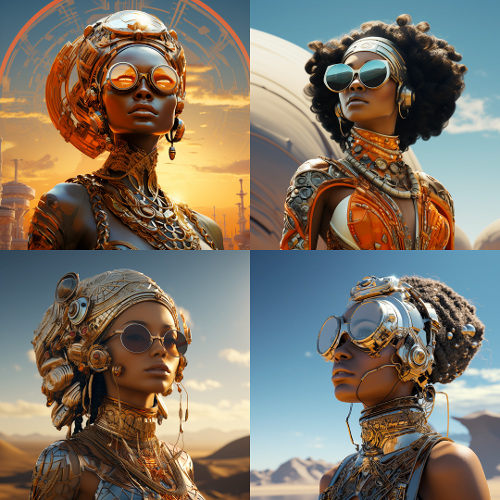
The fantasy elements may be seen in its exploration of alternative realities and speculative societies heavily influenced by African cultures. However, Afrofuturism stands out from traditional fantasy art in that it also broadly examines historical, cultural, and socio-political issues related to the African diaspora.
At times, the term "Afrofantasy" is used in the context of Afrofuturism to describe works of speculative fiction that draws heavily from African mythology and history, creating a fantastical universe where Black characters take center stage.
In conclusion, while Afrofuturism does encompass elements typically associated with "fantasy art," it is a complex, multidimensional cultural and artistic movement that goes beyond this single domain, merging aspects of science fiction, historical analysis, cultural exploration, and social critique.
In conclusion, Afrofuturism is a robust and dynamic aesthetic that encompasses multiple facets of art, literature, music, and culture. It is not just a style of art, but a standpoint of resistance and a vision of a hopeful, technologically advanced future where Black identity and culture are at the forefront.
For readers captivated by this intersection of past, present, and future, there are related genres you may also relish exploring. In literature, magical realism, and speculative fiction often also probe the boundaries of imagination and reality with a unique cultural lens. In visual art, biomorphism and surrealism may appeal to those drawn to the otherworldly and imaginative aspects of Afrofuturism. Those with an interest in cutting-edge technology as a driving force may want to delve into Cyberpunk or Biopunk genres, which weave technology into integral parts of their narratives.
Moreover, related movements like Africanfuturism and Ethnofuturism, which focus more extensively on African and non-western cultures respectively in their speculative narratives, may be of interest to our readers.
Regardless of where you choose to delve deeper, remember that at its heart, Afrofuturism is about celebrating and imagining futures that center on the Black experience. As Afrofuturism continues to gain mainstream recognition and transforms the realms of art, music, film, and literature, it's essential to recognize and celebrate the visionary voices and creative works that have led and continue to shape this empowering movement. From this journey through Afrofuturism, it's clear that the future—in all its forms—is indeed now.
Please note, this content ( text & images ) is 100% AI generated under the control of Jason Mellet, and whilst entertaining I don't claim anything here to be factual or correct. Read about other amazing types of art.
Sources:
Wikipedia
Architectural Digest
UCLA
ThoughtCo
National Museum of African American History and Culture
Tate
Time
Wisconsin Public Radio
UCLA
Ms. Magazine
WMUR
Tate
Fourteen East Magazine
Taylor & Francis Online
The Metropolitan Museum of Art
EBSCO
Concordia University
JSTOR
Inspiring Young Artists at Pipe & Palette near Willow Bend Mall!
In the heart of Plano, TX, inside Willow Bend Mall, is a vibrant art haven known as Pipe & Palette. This creative gem offers children an engaging and encouraging space to unleash their artistic potential. Our kid-friendly painting classes and workshops are guided by experienced instructors, who passionately fuel the artistic fire within every young learner.
Whether it's our fun-filled summer art camps or our stimulating 'Kids Night Out' every Wednesday, Pipe & Palette is committed to nurturing creativity and confidence. Our art programs not only entertain but also contribute to children's cognitive and social development. Pipe & Palette is lighting the path for the future Picassos and Van Goghs of Plano. Join us and be a part of this extraordinary art journey!

